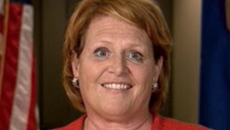Here Come The Annual Spring Gas Price Conspiracy Theories

It’s spring time. That means we’re entering the summer driving season, and increased demand typically drives up fuel prices. And thanks to gas prices being one of the most visible economic metrics – heck, the prices are posted on signs along every road in America – people get upset when the prices go up.
We’re treated to all manner of conspiracy theories about “Big Oil,” and even some political grandstanding. I’m sure some member of Congress will demand yet another FTC investigation into alleged price gouging which will find no evidence of collusion, and I’m sure that finding will be dismissed again by cynics confident that the government is in on the conspiracy.
But here are a couple of things to keep in mind:
First, even seemingly dramatic price hikes don’t have a lot of real-world impact. Fargo has seen a $.30/gallon price hike in the last week. That seems large, but it’s just a $6.00 increase on a 20 gallon fill-up. For someone who fills there car up once a week, we’re talking about a roughly $24 monthly increase in fuel prices.
Though higher prices are always irritating, that’s hardly going to break the bank for most Americans.
Second, the higher prices really are a function of supply and demand. Not only are we entering a season of increased demand for fuel, but several refineries are shutting down to switch to government-required summer driving blends.
Which brings us to the real cause of these gasoline price spikes: It’s the government.
Heavy government regulation of everything from oil production to oil transport to oil refining makes it hard for the industry to match production with demand. Government mandates for fuel blends, notably the Renewable Fuels Mandate, also create complications.
If we want a less volatile fuel market, we should demand less government intervention in our fuel markets. We cannot watch the government restrict production and refining, and then blame the industry for price spikes.







